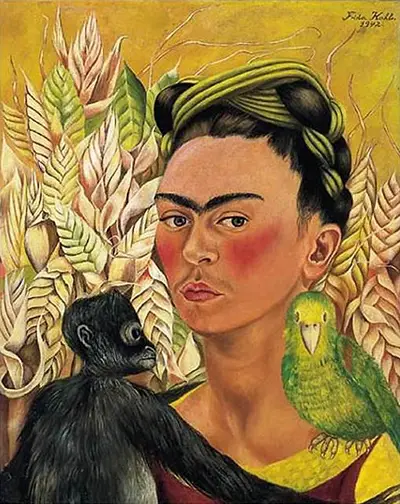It is one of fifty-five self-portraits she produced in her lifetime, and one of many self-portraits to feature Kahlo with her pet monkeys.
Animals and other elements of nature, such as the leafy background in this piece, appear often in her works, reflecting a strong connection to nature. The flat perspective and bright colours seen in this piece are also elements of her distinctive style, which is considered naive art.
Kahlo's lack of formal art training further supports this classification. Some of her works have also been described as surrealist. She, however, unequivocally rejected this label, protesting that she simply painted her own reality.
Her stylistic choices can be attributed to the inspiration Kahlo drew from traditional Mexican and indigenous Aztec culture. Being part indigenous herself, she strove to represent this culture openly and truthfully, without the romanticism often seen in the revolutionary propaganda of the time.
She wrote in a letter in 1952 that she wished to be worthy, with her paintings, of the people to whom she belonged. Kahlo decried what she called bourgeois art, believing her more traditional art to be more honest.
Additionally, she typically wore traditional clothing, and therefore depicted herself in the same clothing in her self-portraits, which can be seen in this piece.
Kahlo also used Aztec symbolism of animals extensively in her art. The frequent appearance of the monkey in her work suggests that she may have chosen it as her companion animal. Though she often depicts them as gentle and protective, monkeys were considered a symbol of lust and promiscuity.
The parrot, another favourite of hers which appears in this piece, similarly represents lust, as well as the occult. It may also be a self-deprecating reference to her inability to have children after being injured in a traffic accident, as childless women were sometimes called parrots in Mexican popular culture.

